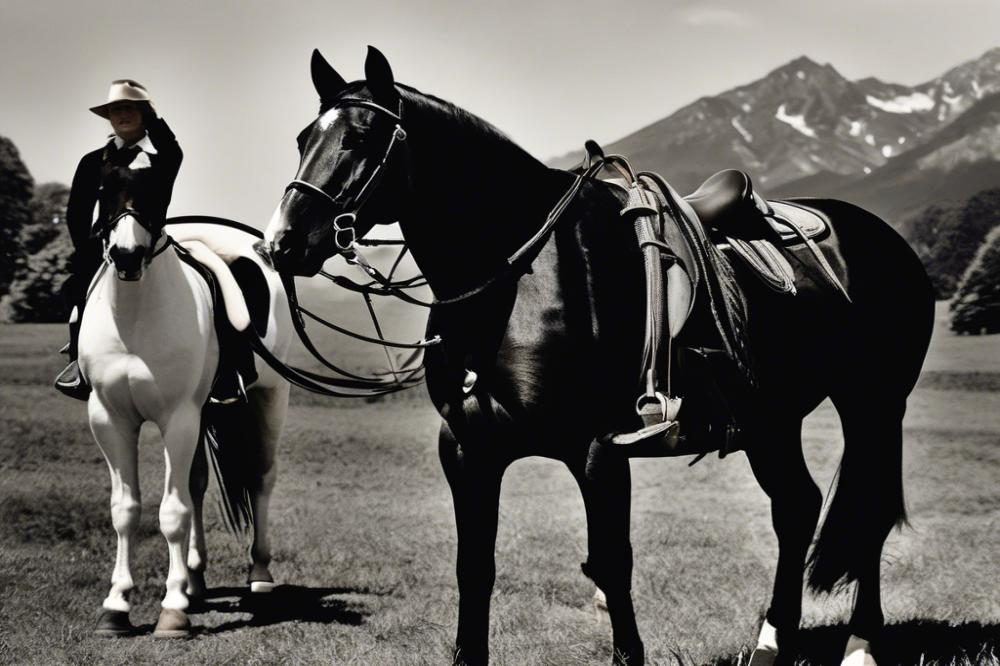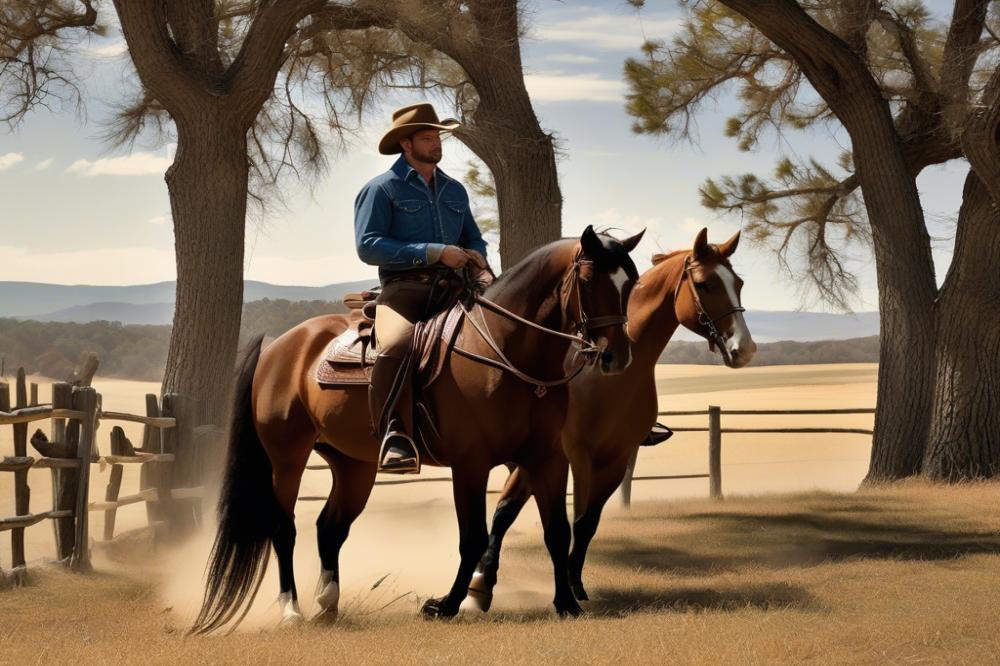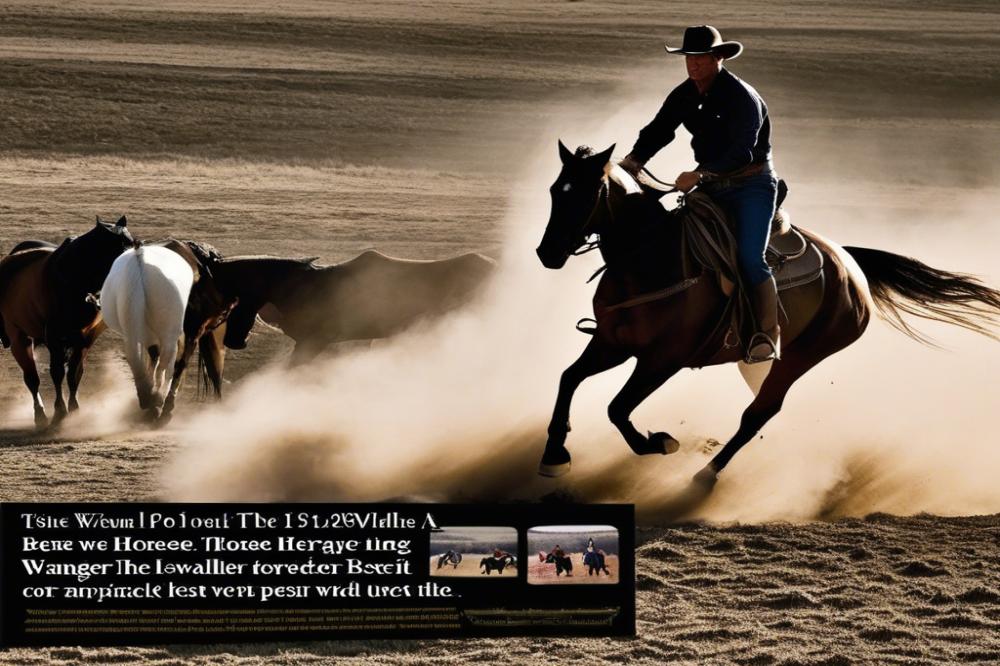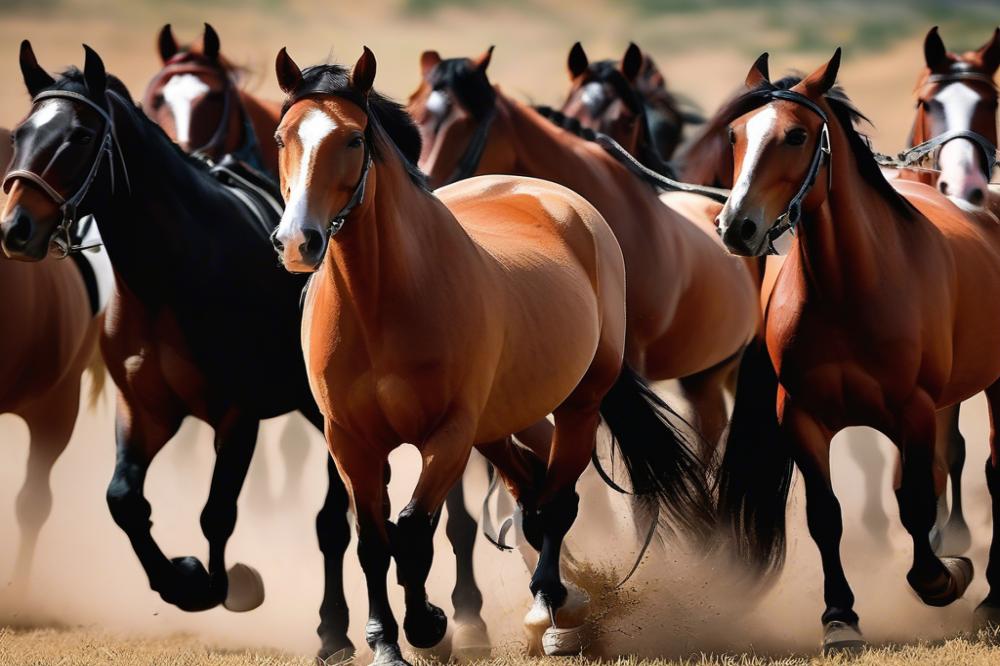Understanding the Wrangler
When we hear the term ‘wrangler,’ many images might spring to mind, especially among those who love equestrian culture. It often refers to someone who handles and cares for horses, but there’s so much more to explore. These individuals are like the unsung heroes of the horse world, going beyond just horse care. They blend skill, patience, and a deep understanding of these magnificent creatures.
A wrangler’s role can be easily likened to that of a trusted friend. You know, the type of friend who always seems to know how to handle even the most stubborn chocolate palomino? They have a unique ability to connect with horses and a wealth of knowledge about horse history and all the diverse breeds. Sure, riding can be glamorous, but the real magic happens behind the scenes, where the wrangler’s hard work often goes unnoticed.
In the arena of equestrian entertainment, wranglers play a key part. They prepare the horses, manage their care, and sometimes even train them. Imagine a rodeo without brave riders and forever-willing horses. It would be like a music concert without any tunes—pretty dull, right? These caregivers ensure that every event runs smoothly, and their bond with horses can often be seen from the sidelines.
It’s important to share some fascinating Wrangler facts to understand their significance better. From trail rides to packed competitions, horse riders rely heavily on the expertise of wranglers to keep everything in tip-top shape. Much like a conductor leading an orchestra, they bring out the best in every horse, helping each one shine in their own special way. Plus, let’s not forget that some wranglers might have a bit of humor to sprinkle into their routine; who can resist a good horse joke now and then?
The world of wrangling is vast, full of tales, experiences, and endless adventures. Whether one dreams of the grassy plains or the dusty trails, there’s no denying the importance of these dedicated horse lovers. After all, a rider can have the best truck to pull a horse trailer, but without a skilled wrangler, that horse won’t be ready for the ride of its life!
Origins of Wrangler

Etymology of the word ‘wrangler’
The term “wrangler” comes from the English word “wrangle,” which means to argue or dispute. However, in the world of horseback riding, it took on a different meaning. Instead of fighting over issues, a wrangler is someone who takes care of horses. This person is often responsible for looking after the animals and making sure they are healthy and well-prepped for riding or shows. The word reflects the strong connection between horse care and equestrian culture. You could say these folks are the caretakers of this majestic animal, helping keep the spirit of horse history alive.
Historical context and cultural significance in early horse culture
Back in the day, wranglers played a crucial role in the lives of horse riders. Imagine living in a time when horses were the main mode of transportation. Cowboys and ranchers depended on wranglers to manage their herds. A wrangler’s skills were essential for everyday tasks, from grooming and feeding to training young horses. Equestrian entertainment, such as rodeos, often featured these diligent workers showcasing their talents.
Moreover, wranglers were more than just horse handlers. They were storytellers, passing down tales and traditions of the cowboy life. Through their work, they helped shape the American West, making their mark on both horse history and our culture. When we think about Wrangler facts, it’s easy to see their contributions were significant. They bridged the gap between humans and horses, creating a bond that continues to this day.
Picture a wrangler sitting by a campfire, with the stars shining overhead. They share stories about the horses they’ve trained or the adventures they’ve had on the range. This image captures the heart and spirit of the wrangler’s life. The connection with horses runs deep, giving us a glimpse into the past. The legacy they left behind is woven into the very fabric of our relationship with horses. So next time you hear the word “wrangler,” think beyond the name. It’s a tribute to those who dedicated their lives to understanding and caring for these incredible animals.
Role of Wranglers in the American West

The American West is well known for its wide-open spaces and rugged landscapes. Among the iconic figures of this region, wranglers played a crucial part in shaping cattle ranching. These skilled individuals were responsible for handling horses and cattle, ensuring that everything ran smoothly on the ranch. Without wranglers, many ranches might have struggled to manage their herds. It’s hard to imagine a ranch without these multi-talented folks!
Exploration of Wranglers in the Context of Cattle Ranching
Cattle ranching demanded hard work and dedication. Wranglers not only roped cattle but also took care of the horses they rode. Horse care was no small task; it involved grooming, feeding, and keeping them healthy. A well-cared-for horse made life a lot easier for the wrangler. They often spent long days in the saddle, moving cattle from one place to another. With every ride, they built a special bond with their horses. This relationship was just as important as their general horse history.
Traveling across vast ranches in search of grazing land, wranglers learned how to adapt to nature. The weather and terrain affected their work. If the sun was blazing or the wind howling, these cowboys and cowgirls kept going. Their grit and determination became a part of their identity. You could say wrapping a lasso around a steer was a dance that required skill and practice! That’s why wrangling had its own rhythm.
The Impact of Cowboy Culture on Wrangling Practices
Cowboy culture added color to the life of a wrangler. Equestrian culture blended with traditions that came from generations of horse riders. This mix of heritage played a huge role in shaping how wranglers operated. Music, stories, and skills passed down through families made this lifestyle rich. Rodeos often showcased these talents, turning work into equestrian entertainment. Everyone would gather to see roping and riding competitions, bringing communities together.
Wranglers weren’t just tough folks. They had a sense of community, sharing tips and stories around a campfire after a long day. Learning from each other gave them insight into better practices. They swapped advice on horse care and proper techniques, fostering teamwork. Life wasn’t just about cattle; it was about camaraderie. In many ways, this social aspect made their rugged job less lonely.
Interestingly, many people don’t realize how much the presence of wranglers impacted American culture. Their legacy of hard work, adventure, and connection to nature is still celebrated today. People still romanticize the cowboy image, making ranches a popular theme for movies and books. Next time you see a cowboy hat or hear a country song, think about the wranglers who help keep that spirit alive!
The Evolution of Wrangler Responsibilities

Wranglers have always had a special role in equestrian culture. Many years ago, their main job was to take care of the horses and help with daily chores on ranches. Horse care was no small task. Back then, wranglers often worked long hours in the hot sun. They groomed, fed, and saddled horses, making sure everything was just right. Imagine a team of wranglers working together at dawn, horses whinnying, and dust swirling around them. It wasn’t glamorous, but it was filled with purpose.
Transition from Traditional to Modern Wrangling Practices
Over time, the duties of wranglers changed quite a bit. The world began to embrace new technology. Ranchers started using tractors and other machines to help with the heavy lifting. This shift meant fewer hands were needed for some tasks. But, this didn’t spell doom for wranglers. Instead, their roles evolved. They became skilled in using gadgets that helped them track herds and monitor horse health. GPS systems and other tools have transformed how wranglers do their jobs. It’s a bit like how horse history teaches us that change is often beneficial.
While traditional skills are still valued, modern wrangling is also about adapting to these advancements. Horse riders today often need to know more than just how to handle a horse. They must also understand software that helps manage ranch operations. Despite these tech changes, the essence of caring for horses remains the same. A good wrangler needs knowledge, patience, and a strong bond with their horses.
How Technology and Changing Ranching Practices Have Influenced Roles
With the rise of equestrian entertainment, the focus has shifted somewhat. Increased tourism and shows have created new opportunities for wranglers. They’re not just caretakers; they also become part of the show. From teaching riding lessons to organizing events, their versatility is key. You might see a wrangler preparing horses for a rodeo, ensuring everything runs smoothly. That’s a whole different kind of responsibility!
Social media has also changed how people view this line of work. Nowadays, wranglers can showcase their skills online. Knowing how to promote themselves can lead to amazing opportunities. It helps connect eager horse riders with ranches looking for help. Additionally, maintaining horse care is shared widely through videos and posts, inspiring others to join the equestrian world.
As ranching practices continue to evolve, so do the expectations on wranglers. They must remain flexible and willing to learn. Whether it’s dealing with smarter horses or navigating social media, adaptability is critical. Just like a seasoned cowboy knows when to stay in the saddle and when to steer clear, today’s wranglers balance tradition with innovation. Each change in the workplace invites a new set of challenges to tackle.
Wranglers in Popular Culture
Portrayal of Wranglers in Literature, Film, and Music
Wranglers have shaped stories for ages. From classic novels to Hollywood blockbusters, they often take center stage. These characters represent the spirit of adventure and ruggedness. They embody hard work and connection to animals, particularly horses. “The Lone Ranger,” for example, shows how the hero rides into action, teaching us about bravery and justice. Movies like “Brokeback Mountain” explore deeper emotions. Horse riders tackle love and loss, adding complexity to their lives.
Books often reflect different aspects of horse care. The bond between a rider and their horse is a common theme. It explores trust and companionship. In music, country songs frequently honor this lifestyle. Lyrics celebrate the beauty of open fields and the thrill of the rodeo.
Influence of Popular Culture on the Perception of Wrangling
Cultural depictions have a strong impact on how people see wrangling. If you watch a movie with a villain on a horse, it can change your mind about ranch life. Equestrian culture seems glamorous in many films, but it’s also hard work. Folks might think of cowboys as tough but forget about the dedication behind horse history.
Some television shows romanticize the life of cowboys and wranglers. They make it look easy, but there’s a lot of truth hidden beneath that charm. Maintaining horses is no small task. It involves feeding, grooming, and training; the effort is real.
Songs often paint a picturesque portrayal. Names of famous horse riders pop up in lyrics, turning them into celebrities. Their lives showcase adventure, heartbreak, and rodeo excitement. This can lead people to believe that every wrangler has a story worth telling. The glamor often overshadows the daily grind of hard work.
Perceptions might not reflect the entire truth, but that’s what storytelling does. It gives life to ideas and can inspire new generations. Whether it’s through lively ballads or dramatic films, the legacy of wranglers continues. We remember their contributions to equestrian entertainment and the bond with their horses. Just like a good rodeo, the cycles of perception keep spinning.
Training and Skills of a Wrangler
Being a wrangler is no small feat. These individuals are the backbone of our rich equestrian culture. The job requires a specific set of skills that go beyond simply knowing how to ride a horse. Wranglers need a good mix of training and hands-on experience. It’s not just about sitting in the saddle; it’s about understanding the horse’s mind.
Essential Skills for Wranglers
One of the most important skills for a wrangler is horse handling. This means knowing how to catch, saddle, and ride a horse with confidence. Effective communication with the animal is key. Many horse riders will tell you that a good bond with the horse makes all the difference. Not every person can handle a spirited animal. It takes practice and patience to develop this relationship.
Another vital skill is leadership. Wranglers often guide groups of riders through trails. They must keep everyone safe while ensuring the ride is enjoyable. Picture leading a group of excited beginners through a beautiful sunset. Sounds fun, but it requires sharp focus and a steady hand.
The Importance of Horse Handling and Care
Caring for horses is an essential part of wrangling. Daily routines include grooming, feeding, and checking for health issues. Wranglers need to know basic horse care, especially concerning diet and exercise. A well-cared-for horse is a happy horse. In turn, this leads to a smooth experience for everyone involved.
Understanding horse history is also beneficial. Knowing how horses have evolved helps wranglers appreciate their nature. This knowledge can inform everything from training techniques to ensuring the horse’s comfort during rides. Plus, it makes for interesting conversation around the campfire!
Finally, wrangling isn’t only about the horses. It includes aspects of equestrian entertainment as well. Sometimes, wranglers organize fun activities or demonstrations for riders. This can include skill shows or even trick riding. It’s all part of creating memorable experiences in the saddle.
Modern Day Wranglers
Current State of Wrangling and Its Relevance Today
Wranglers today play a crucial role in the world of equestrian culture. They manage horses, train them, and ensure their safety. People often think of wranglers as just cowboys from the old west, but the reality is much richer. They’re skilled caretakers who understand horse care in a very special way. Whether it’s in rodeos, ranches, or for recreational riders, wranglers are everywhere.
Equestrian entertainment has also transformed over the years. Modern-day rodeos feature exciting events that attract huge crowds. It’s not just about the competition; it’s about the thrill of the ride! Horse riders now have more access to various training methods and equipment, allowing them to connect with the animals like never before. Wrangler facts reveal an industry that’s evolving, marrying tradition with contemporary techniques.
Challenges Faced by Wranglers in Contemporary Society
Life as a wrangler is not all about fun and riding off into the sunset. They face many challenges that can make their jobs tough. For instance, maintaining a balance between tradition and modern expectations is difficult. New technologies can help, but some feel it strays too far from the authentic horse history they cherish.
Moreover, economic pressures also weigh heavily on wranglers. Many find it hard to make a living in today’s world when competition is fierce. Ranches might be shrinking, leading to fewer job opportunities. Finding reliable clients can sometimes feel like searching for a needle in a haystack. The need for good management and organization has never been greater.
Another big hurdle? Public perception. Some folks see wrangling as just a hobby, not a serious job. So, education on the importance of this role is vital. Wranglers are passionate about their work, but they need support and understanding from the community. This disconnect sometimes makes it tough to keep the spirit of wrangling alive amidst changing times.
As everyone knows, working with horses requires dedication, patience, and a lot of heart. Wranglers not only lead but often become friends and partners to these remarkable creatures. They create lasting bonds that showcase the best of equestrian culture. However, they could really use a hand in navigating the waters of a new age. After all, every cowboy and cowgirl has a story worth telling.
Final Thoughts
The history of the Wrangler is more than just a tale of denim and ruggedness; it’s a story of American adventure and the spirit of exploration. From its humble beginnings as workwear to becoming an iconic symbol of freedom on the open road, the Wrangler has woven itself into the fabric of culture. People from all walks of life don this classic garment, each with their own unique reasons. From cowboys to city dwellers, everyone finds something appealing in that recognizable silhouette.
Looking ahead, the future of wrangling appears just as bright as the sun setting on a vast horizon. It’s exciting to think about how this cultural heritage will continue to evolve. New generations will put their spin on this classic style, and who knows what twists will come next? While it’s often asked, “do horses race in the rain?” one thing is sure: whether in a rodeo arena or a casual gathering, the Wrangler will remain a timeless choice. As fashion changes, we will certainly see new designs and influences that keep the spirit of wrangling alive.
Reflecting on what we’ve explored, it’s clear that the Wrangler isn’t merely clothing; it’s a way of life. It reminds us of the adventurous spirit of those early days when riding horses was the norm. Who can forget the image of a horse curly, galloping freely across the plains, exuding a sense of connection to nature? Those moments remind us that our roots remain important, even as new trends emerge. So, whether you’re a cowboy at heart or just love the aesthetic, remember that the Wrangler story is yours to tell, too.
In the end, this durable garment embodies not just functionality, but also a sense of belonging. Whether on mountain trails or urban streets, donning a Wrangler can ignite a sense of community. It pulls together stories from past and present, wrapping them in the warmth of comfortable denim. As we ride into the future, let’s continue to celebrate what makes this piece of clothing a cultural treasure, forging connections that will last for generations.



